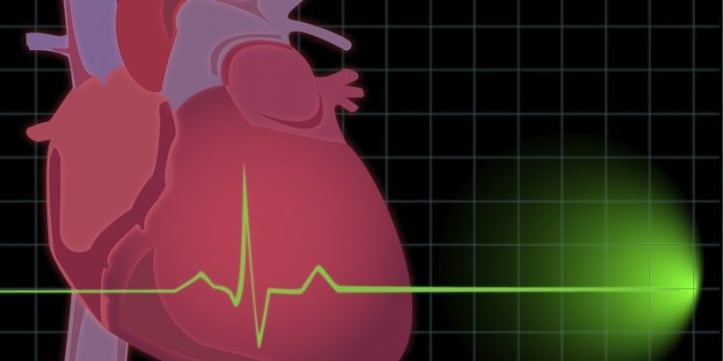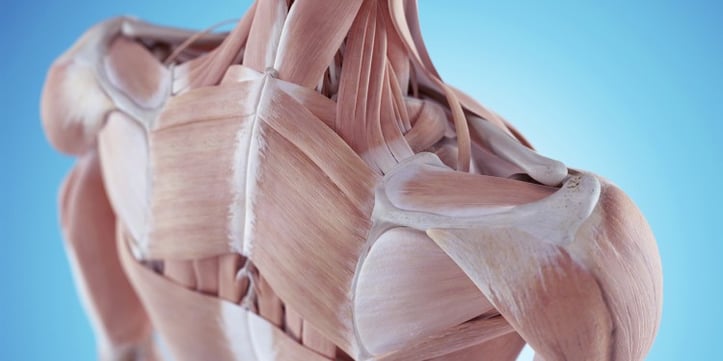
Introduction
As the initial excitement of New Year's resolutions or other weight loss goals fades, it can be challenging for clients to stay motivated. However, understanding the underlying physiological and psychological principles can help both clients and health professionals keep the momentum going. This blog post will explore these principles and provide unique insights and strategies for sustainable weight loss.
Physiological Principles of Weight Loss
Energy Balance
At its core, weight loss is based on the principle of energy balance. According to the NIH's Body Weight Planner, to lose weight, one must consume fewer calories than they expend. The Academy of Nutrition and Dietetics also emphasizes this fundamental concept. When the body is in a calorie deficit, it starts to use stored fat for energy, leading to weight loss. For example, if a person burns 2000 calories a day through basal metabolic rate (BMR), physical activity, and thermic effect of food, and they consume only 1500 calories, they will create a 500 - calorie deficit per day, which can lead to a weekly weight loss of about 1 pound (assuming no significant changes in muscle mass).
Hormone Regulation
Hormones play a crucial role in weight loss. Leptin, often called the "satiety hormone," is produced by fat cells. As a person loses weight, leptin levels decrease, which can increase appetite and make it more difficult to stick to a reduced - calorie diet. Ghrelin, the "hunger hormone," also becomes more active as weight loss progresses. However, research from The Obesity Society has shown that over time, the body can adjust to these hormonal changes. For instance, consistent exercise can help regulate these hormones, reducing the impact of increased hunger signals.
Metabolic Adaptation
Metabolic adaptation is another important physiological factor. When a person restricts calories, the body's metabolic rate can slow down to conserve energy. This is the body's natural response to what it perceives as a starvation state. However, this doesn't mean that weight loss is impossible. By incorporating high - intensity interval training (HIIT), as recommended by the American College of Sports Medicine (ACSM), clients can increase their metabolic rate and burn more calories even at rest. Additionally, ensuring an adequate protein intake can help preserve muscle mass, which is crucial for maintaining a healthy metabolic rate during weight loss.
Psychological Principles of Weight Loss
Dieting Behavior
Dieting behavior is often influenced by psychological factors. Many people start a diet with a lot of enthusiasm but quickly become discouraged when they don't see immediate results. This is where setting realistic goals comes in. Instead of aiming for rapid weight loss, clients should be encouraged to focus on small, sustainable changes. For example, instead of cutting out all carbohydrates at once, they could start by reducing their intake of refined grains and increasing their consumption of whole grains. This approach is more likely to be successful in the long term and can help build confidence in their ability to make healthy changes.
Emotional Eating
Emotional eating is a common challenge in weight loss. According to research, emotions such as stress, anxiety, and boredom can trigger overeating. Clients need to learn to recognize these emotional triggers and find alternative ways to cope. For example, instead of reaching for a bag of chips when feeling stressed, they could go for a walk or practice deep breathing exercises. Mindfulness - based eating has also been shown to be effective in reducing emotional eating. By being more present and aware of their hunger and fullness cues, clients can make more conscious food choices.
Unique Insights for Weight Loss
Tailoring Strategies to Metabolic Types
One often - overlooked aspect is tailoring weight loss strategies to different metabolic types. Some people have a slow metabolism, while others have a faster one. For those with a slow metabolism, focusing on increasing their metabolic rate through strength training and high - intensity exercise is crucial. They may also need to be more mindful of their calorie intake and choose nutrient - dense foods that provide more energy per calorie. On the other hand, those with a faster metabolism may be able to tolerate a slightly higher calorie intake while still losing weight, but they need to ensure that they are getting enough nutrients to support their active lifestyle.
Non - Scale Victories
Another important but often neglected aspect is the recognition of non - scale victories. While the number on the scale is an obvious indicator of weight loss, other factors such as increased energy levels, improved sleep quality, and better mood are also significant. For example, a client may notice that they have more energy to play with their children or that they are sleeping more soundly at night. These non - scale victories can be a great source of motivation and should be celebrated just as much as weight loss. By focusing on these overall improvements in health, clients are more likely to stay committed to their weight loss journey.
Science - Backed Strategies for Weight Loss
One - Day Weight Loss Meal Plan Example
- Breakfast: A bowl of oatmeal with berries (about 200 calories) and a hard - boiled egg (70 calories). This meal provides a good balance of complex carbohydrates, protein, and fiber, which can help keep you feeling full throughout the morning. The oatmeal has a low glycemic index, which means it releases energy slowly, and the berries are rich in antioxidants. The egg is a great source of high - quality protein.
- Snack: A small apple (about 80 calories) and a tablespoon of natural almond butter (100 calories). This snack provides a combination of healthy fats, fiber, and carbohydrates, which can help satisfy hunger between meals.
- Lunch: Grilled chicken salad with mixed greens, cucumbers, tomatoes, and a light vinaigrette dressing (about 300 calories). The chicken is a lean source of protein, and the vegetables are rich in vitamins, minerals, and fiber. The vinaigrette dressing should be used sparingly to keep the calorie count down.
- Dinner: Baked salmon (about 250 calories) with steamed broccoli and quinoa (about 200 calories). Salmon is a great source of omega - 3 fatty acids, which are beneficial for heart health. The broccoli is high in fiber and vitamins, and the quinoa is a complete protein and a good source of complex carbohydrates.
This meal plan provides approximately 1200 - 1300 calories, which can be adjusted based on individual needs and activity levels. It is rich in protein, fiber, and healthy fats, and low in processed foods and added sugars.
Beginner - Friendly Fat - Burning Exercise Combination
- Brisk Walking: Start with 30 minutes of brisk walking at a moderate pace. This is a great low - impact exercise that can help improve cardiovascular health and burn calories. It can be done almost anywhere, making it very accessible for beginners.
- Bodyweight Squats: Do 2 - 3 sets of 10 - 12 bodyweight squats. This exercise targets the lower body muscles, including the quadriceps, hamstrings, and glutes. It helps build strength and can increase the metabolic rate.
- Yoga or Pilates: Incorporate 20 - 30 minutes of yoga or Pilates a few times a week. These exercises focus on flexibility, balance, and core strength. They can also help reduce stress, which is important for overall health and weight loss.
Real - Life Success Story
One of my clients, let's call her Sarah, was struggling to lose weight. She had tried several diets in the past but always gave up after a few weeks. When we started working together, we focused on her overall health rather than just the number on the scale. We started with small changes to her diet, such as replacing sugary drinks with water and increasing her intake of fruits and vegetables. We also incorporated a regular exercise routine that included walking and strength training. After a few months, Sarah not only lost weight but also noticed a significant improvement in her energy levels and mood. She was able to keep up with her children more easily and felt more confident in herself. This success story shows that by taking a holistic approach to weight loss and focusing on non - scale victories, clients can achieve long - term success.
Challenges in Weight Loss and How to Overcome Them
Plateaus
Weight loss plateaus are a common challenge. After a period of successful weight loss, the body may adapt to the new calorie intake and activity level, and weight loss may slow down or stop. To overcome a plateau, clients can try increasing their physical activity, adjusting their diet slightly (for example, reducing calorie intake by another 100 - 200 calories per day), or changing the type of exercise they are doing. For example, if they have been doing mainly cardio, they could add more strength training to their routine.
Hunger
Feeling hungry during weight loss is normal, especially in the beginning. However, clients can manage hunger by choosing foods that are high in fiber and protein, which can help keep them feeling full. Eating small, frequent meals throughout the day can also help regulate hunger. Additionally, drinking plenty of water can help reduce false hunger signals. If a client is still feeling hungry, they can try having a small, healthy snack such as a piece of fruit or a handful of nuts.
FAQ
Q: How quickly can I expect to lose weight?
A: A healthy and sustainable rate of weight loss is about 1 - 2 pounds per week. However, this can vary depending on individual factors such as starting weight, metabolism, and activity level.
Q: Can I still eat my favorite foods while trying to lose weight?
A: Yes, you can. The key is to eat them in moderation. You can also find healthier ways to prepare your favorite foods, such as baking instead of frying.
Q: Do I need to exercise to lose weight?
A: While diet is the most important factor in weight loss, exercise can help increase the amount of weight you lose and improve your overall health. It can also help prevent muscle loss during weight loss and reduce the risk of weight regain.
Call to Action
This week, start your healthy weight loss journey by making one small change. For example, try replacing your regular salad dressing with a low - calorie, homemade vinaigrette. This simple change can save you calories without sacrificing flavor, and it's a great way to start making healthier choices.

Fit vs Fat: Decoding Health's True Ruler

Pump Up Your Heart: Science-Driven Weight Loss

Wellness Technology: Your Path to Sustainable Weight Loss

A Sensible Guide to Dietary New Year's Resolutions

Prevent Shoulder and Rotator Cuff Injuries with Corrective Exercises

Overcome Fitness Plateaus: 4 Tips for Success

10 x 10 Thanksgiving Day Circuit: A Fitness Guide

Unleash Your Fitness Potential with Kit Rich's Training Secrets

The Future of Fitness: A Guide for Beginners to Intermediates

